Plants that will thrive in ever more common heat & drought conditions?
rouge21_gw (CDN Z5b/6a)
last year
last modified: last year
Featured Answer
Sort by:Oldest
Comments (8)
Related Discussions
3 months of drought, heat and humidity. this years winners are?
Comments (4)Pippi21, thee critters are the 4 legged kind, mostly chipmunks, 1 groundhog and the bunnies where a few. nothing has worked to keep them away, the groundhog is famous for climbing my 7 foot chain link fence to get in, and the animal detergent did nothing and liquid fence and urine stuff is a waste of time and money. solved no problems or deter any critter. The groundhog met his demise. he got to close to a nesting family of red tailed hawks (or is that red winged?). either way, when the parent hawks where through with him/her, there was nothing left. My datura metal plants, grown in pots are now big enough to do some good as well as be beautiful. The chipmunks are chewing on the leaves and meeting their demise as well. Since all parts of the plant are fatal to them, and a deadly poison, we are now finding lots of dead chipmunks all over the front lawn. As for being homeless? I don't think so. these critters got their homes and dens underground all over the place. chase them away and down the holes they go. Only to return with a vengence a short time later. I gave up on bulbs years ago. Any planted where eaten within days. Now I have a few clumps of daffodils and crocus that arrived courtesy of some 4 legged critter that stole them from someone else's yard. Fran...See MoreImproving Drought Conditions
Comments (17)I know that extreme is still pretty bad, but at least it is am improvement over exceptional drought. I hope y'all continue to see improving conditions and that enough rain falls to significantly replenish the lakes. That 17% just isn't nearly enough. I hate seeing people burn leaves because they make such a fine mulch or, if chopped or shredded, a great soil amendment. I'm glad y'all have a nice win-win situation going on there. Enjoy the ground moisture while it lasts! I am a transplanted city woman too, but am surrounded by ranchers with both cows and horses and lots of pasture land. There are several different ways to deal with thatch, and I don't know which one is best in your situation since you have a thatch buildup. You might need a tractor-pulled dethatcher if the layer of thatch is heavily compacted. If the thatch is loose enough that you could easily rake it by hand, then a standard hayrake used to comb hay into windrows for baling might be able to rake up the thatch into windrows, but then you'll still have to gather the windrows up somehow and pile them up to burn, or let them dry out enough to burn and then burn the whole field. One of my neighbors has a thing he calls a dragger that he drags behind the tractor, but it actually uproots plants too and lightly regrades the surface of the soil. He uses the dragger to create a seed bed when overseeding winter rye so that his rye grass seed will make good contact with the soil. The dragger is probably more invasive than what you want if you only want the thatch fluffed up or raked up but don't want to disturb the soil surface. Some rotary cutters (commonly referred to as brushhogs) that are pulled behind tractors have these bars on them called conditioners that crush the hay stems on purpose and then line up the freshly cut pasture grasses/legumes into windrows for baling. If your pasture had been cut by that kind of rotary cutter, it would have left you nice little windrows you could pick up or burn once they were dry. There are brushhogs that don't have the conditioners to make the windrows though. If one of those brushhogs is used to cut a field that is to be hayed, then the person doing the cutting/baling has to come back with a hayrake pulled behind the tractor to rake the hay into windrows. I know hayrakes work great with loose, freshly cut grasses that were just cut, but don't know if they would work on a heavy thatch layer that is compacted or compressed and sort of solid, or at least not as loose as freshly cut grass. So, when calling around, explain the thatch layer and tell them you think you need a dethatcher but that you're open to the idea of a hayrake being used if the hayrake operator believes it will rake up the thatch layer. If there's a better thing to use than a dethatcher, I'm sure they'll tell you. I'll be seeing a professional John Deere tractor mechanic (he is a tractor repair genius!) at a VFD meeting this afternoon. I'll ask him what he'd recommend for removing a serious layer of thatch, and I'll let you know what he says....See MoreTaking care of plants in flood, drought, heat, and cold
Comments (37)Fertilizer plan for pots is tricky, since potting soil doesn't have trace elements like in-the ground soil. Pots leach out nutrients with frequent watering. Pots accumulate the alkalinity of tap-water, and pots become more alkaline in hot & dry climate. The ratio of nutrients is important. Re-post what U. of CA found in rose-tissue: http://www.ipm.ucdavis.edu/PMG/PESTNOTES/pn7465.html For low-ratios, it would be 3 Nitrogen, 2 Potassium, and 0.2 Phosphorus, plus 1 Calcium and 0.25 magnesium. For ppm it would be 50 iron, 30 manganese, 30 boron, 15 zinc, and 5 copper. Re-post the outline which I wrote for Carol in 2015 regarding fertilizer plan for pots. Tomato-Tone is better than Rose-Tone since it has more of the expensive green sand for potassium, plus gypsum for calcium. I always put a couple of earthworms inside my pots, and some organics on top to feed them. Tomato-Tone NPK is 3-4-6, with 8% calcium, contains Bio-tone®, Espoma proprietary blend of beneficial microbes. ONCE A MONTH in hot & dry weather: Tomato Tone NPK 4-3-6 to supply the trace elements of zinc, copper, and boron in chicken manure. Plant Tone is cheaper and works the same. ONCE A MONTH in rainy weather: Pea Gravel & red-lava-rock to supply the calcium & magnesium & trace-elements. That's to fulfill the high-ratios of nutrients in rose tissue in %: 5 nitrogen, 3 potassium, 0.3 phosphorus, 1.5 calcium, and 0.35 magnesium. For ppm it would be 250 manganese, 150 iron, 15 copper, 50 zinc, and 60 boron. Below is Yves-seedling, which I grew from a tiny-seed in 2012, it's 7-months old in 5 hours of morning sun. MG-moisture control potting soil is used. Jobes NPK 2-7-4 is mixed into the potting soil for beneficial bacteria. It's watered 3 times a week with tiny amount of sulfate of potash (21% sulfur at NPK 0-0-50) together with gypsum (calcium sulfate with 17% sulfur) to lower my high pH tap-water. I don't like the high urea, high salt of MG-soluble, so I used a tiny bit of high-phosphorus Bloom-Booster (lower salt-index) for trace elements. Lots of buds (more than 5) on a 7-month-old baby grown from seed. Potassium and calcium, plus phosphorus are needed for solid-root-growth to survive my 5a winter (I transfer roses from pots to ground before winter hit). Below is Excellenz Von Schubert that Seaweed in CA grew In full-sun, fertilized with fish emulsion. Seaweed uses Gardner & Bloom organic potting soil for EVS rose, it blooms lots for her, despite her low annual rainfall of 11" per year: Here's the ingredients in Gardner & Bloom potting soil for the above pot that Seaweed used: "INGREDIENTS: Recycled forest products, bark fines, peat moss, perlite, sand, composted chicken manure, alfalfa meal, bone meal, oyster shell & dolomite limes (as pH adjusters), worm castings, bat guano, kelp meal." http://www.kellogggarden.com/products/gborganics/soils/?s=rose-flower-planting-mix...See MoreWill my climbing roses ever thrive?
Comments (30)Jmackie, Good lawn fertilizer, Espoma. Compost top dressing....Bravo! Once your turf thickens up, and you mow it at the right height for the breeds of grass in it, weeds will disappear, being choked out. First determine what is growing next door in the root zone of your climbers. If flower beds, I believe you are OK. If a shrub border, I believe the chance of weed killer being applied is slim. If lawn, perhaps recommend a non-herbicide fertlizer, explaining the negativ environmental impact of herbicides. Explain your situation to them with the roses. They should be delighted to see you beautify your property, and cooperate. It raises THEIR property value as well as yours, at your expense, effort, and time. Your neighbors may not even fertilize their lawn, so it could be a non-issue. BTW Milorganite (6-4-0), is better than Espoma (8-0-0), and at considerably less cost. Arnold, my brother's brother in law, used Milorganite on his lawn, 3 times a year: early spring, early summer, and fall, at my recommendation. He blessed me up and down for the rich, green, thick lawn he soon grew, cheaply, and safe for his children and dogs. He also overseeded his original horrible lawn with a blend of modern, improved fescues and perennial rye, no Kentucky blue grass, at my insistence, too. Then mowed it in spring at 2.5" and then for the summer at 3", every year the same. With the improved overseeded grasses and Milorganite, the lawn was the envy of his neighbors who all had professional lawn services, but every July-August their lawns would go dormant, and brown up while Arnold's stayed rich and thick green with no watering other than rainfall. Moses...See Morerouge21_gw (CDN Z5b/6a)
last yearlast modified: last yearHU-45580804
last year
Related Stories

GARDENING GUIDES10 Drought-Tolerant Shrubs That Thrive in Full Sun and Reflected Heat
Got a hot spot in your garden where plants often die? Try these tough shrubs that add beauty while shrugging off the heat
Full Story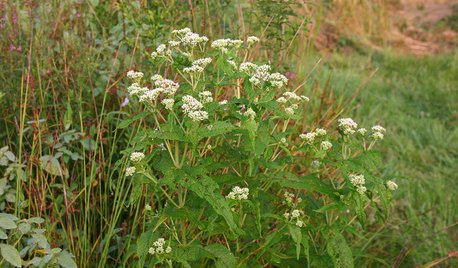
GARDENING GUIDESGreat Design Plant: Common Boneset Helps Good Bugs Thrive
Support bees, moths and butterflies with the nectar of this low-maintenance, versatile and tactile prairie-style plant
Full Story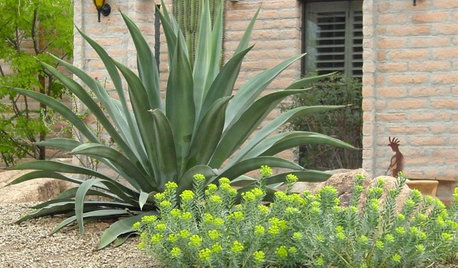
GARDENING GUIDESHow to Spot a Drought-Tolerant Plant
Label? Who needs a label? Learn the characteristics of plants that can thrive in hot, dry conditions to help you pick the right ones
Full Story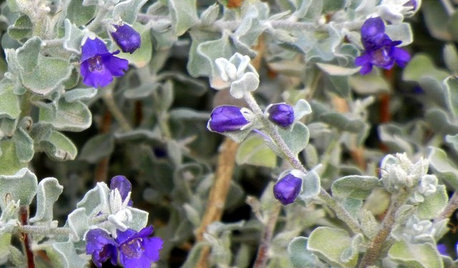
GARDENING GUIDESGreat Design Plant: Violet Silverleaf Thrives on Scant Water
Purple flowers transform silvery, sun-loving Leucophyllum candidum, while its easy care may change your gardening routine
Full Story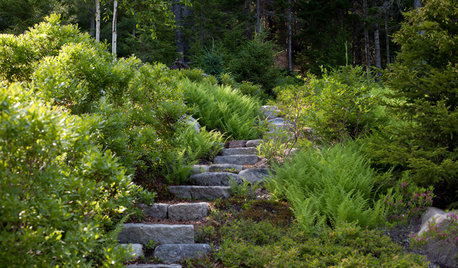
GARDENING GUIDESGreat Design Plant: Grow Blueberries for Their Fruit and More
Eastern gardeners should consider growing blueberry plants for their delicious fruits, bee-friendly spring blooms and brilliant fall foliage
Full Story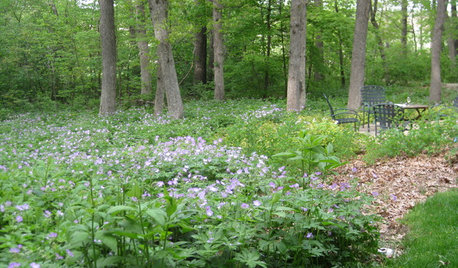
GARDENING GUIDESWe Bust 4 More Native Plant Myths
Have you been taken in by these fallacies about gardening with native plants?
Full Story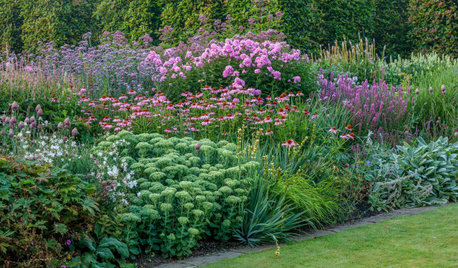
GARDENING GUIDESHow to Get More Plants Free
These techniques will let you grow your garden by creating new plants from those you already have
Full Story
You Said It: ‘The More Dents, the Better’ and More Houzz Quotables
Design advice, inspiration and observations that struck a chord this week
Full Story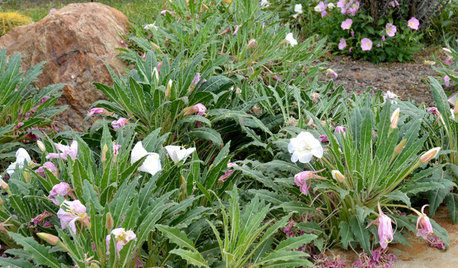
GARDENING GUIDES10 Cold- and Heat-Tolerant Perennials and Shrubs for the Arid West
These flowering native plants shrug off the cold of winter and heat of summer while adding beauty to the drought-tolerant landscape
Full Story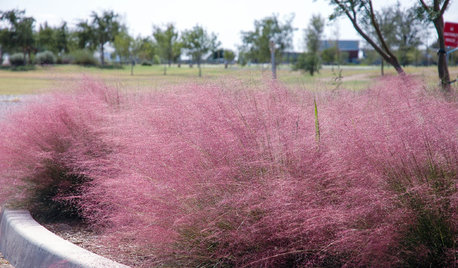
NATIVE PLANTS10 Top Plants Native to the Desert Southwest
Get a thriving garden despite unforgiving conditions with these tough, unthirsty, sun-loving beauties
Full Story


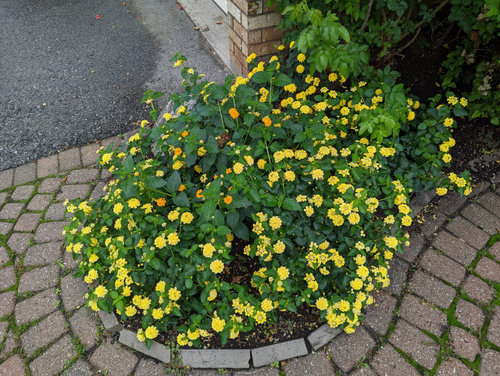


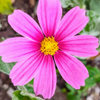
HU-45580804